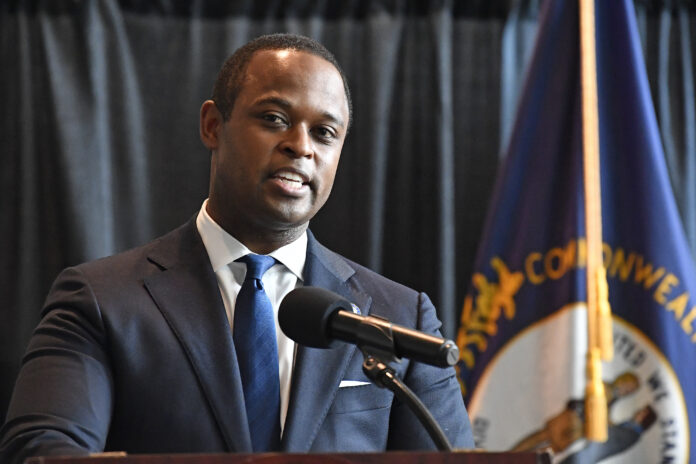
A Kentucky task force on search warrants established in the wake of the fatal Breonna Taylor police shooting is recommending additional training for officers, an electronic database and tracking zip codes where search warrants are executed.
By Dylan Lovan, Associated Press
Kentucky Attorney General Daniel Cameron promised the creation of the task force last year, after his office completed a review of Taylor’s March 13, 2020, fatal shooting. Police used a narcotics warrant to enter Taylor’s apartment shortly before the 26-year-old medical technician was shot to death by officers.
Cameron said the goal of the task force was “to conduct a top to bottom review of the search warrant process” in Kentucky. He announced in a news release Tuesday, December 21, that the 18-member panel had completed its work and issued several recommendations.
“The final recommendations reflect law enforcement’s role in advancing public safety and acknowledge the personal protections guaranteed by our Constitution,” Cameron said.
Cameron, a Republican, was the special prosecutor who investigated the police actions on the night of Taylor’s death. That investigation culminated in a grand jury ruling that did not charge any of the officers in her death. The “no knock” warrant used at Taylor’s home and how it was obtained was not part of Cameron’s investigation, but a federal probe of that process is ongoing.
The task force recommended all state and local agencies use an electronic platform maintained by the state Administrative Office of the Courts to record the use of search warrants and that agencies track the locations where search warrants are used.
“The format should allow the public to compare the number of search warrants served across various zip codes and regions of the Commonwealth,” Cameron’s release said.
It also recommended having prosecutors review and approve search warrants; increased search warrant training for officers; and considering the time of day the warrants are used and whether children might be present.
The task force consisted of state lawmakers, representatives appointed by the Chief Justice of Kentucky’s Supreme Court, police members, citizens and a member of the Kentucky NAACP.
Taylor was killed by officers who fired 32 rounds into her home after Taylor’s boyfriend fired a shot at them. Taylor’s boyfriend said he thought an intruder was breaking in. No drugs were found in her home.
The “no-knock” warrant used to enter Taylor’s home was obtained by a police detective who later acknowledged he did not confirm with postal officials whether a whether a suspected drug dealer was having packages sent to Taylor’s home. The no-knock warrants, which allow officers to burst into a home without announcing, have since been banned by Louisville’s Metro Council in a law named for Taylor.
–
READ MORE LIKE THIS
Louisville (Finally) Terminates Cops Involved in the Death of Breonna Taylor
Black Girls United Unveil Mural of Breonna Taylor
Recordings Reveal Confusion Behind Breonna Taylor’s Death

